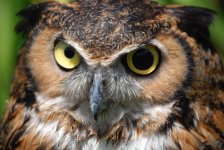Just watching 'The Shrink is in' 2001.
The lead actress, 13 minutes into the movie displays one pupil of 3mm and the other 4.5mm.
Do the pupils of our eyes normally operate independently, depending on light levels entering each eye, or are they synchronised to operate together?
The lead actress, 13 minutes into the movie displays one pupil of 3mm and the other 4.5mm.
Do the pupils of our eyes normally operate independently, depending on light levels entering each eye, or are they synchronised to operate together?






